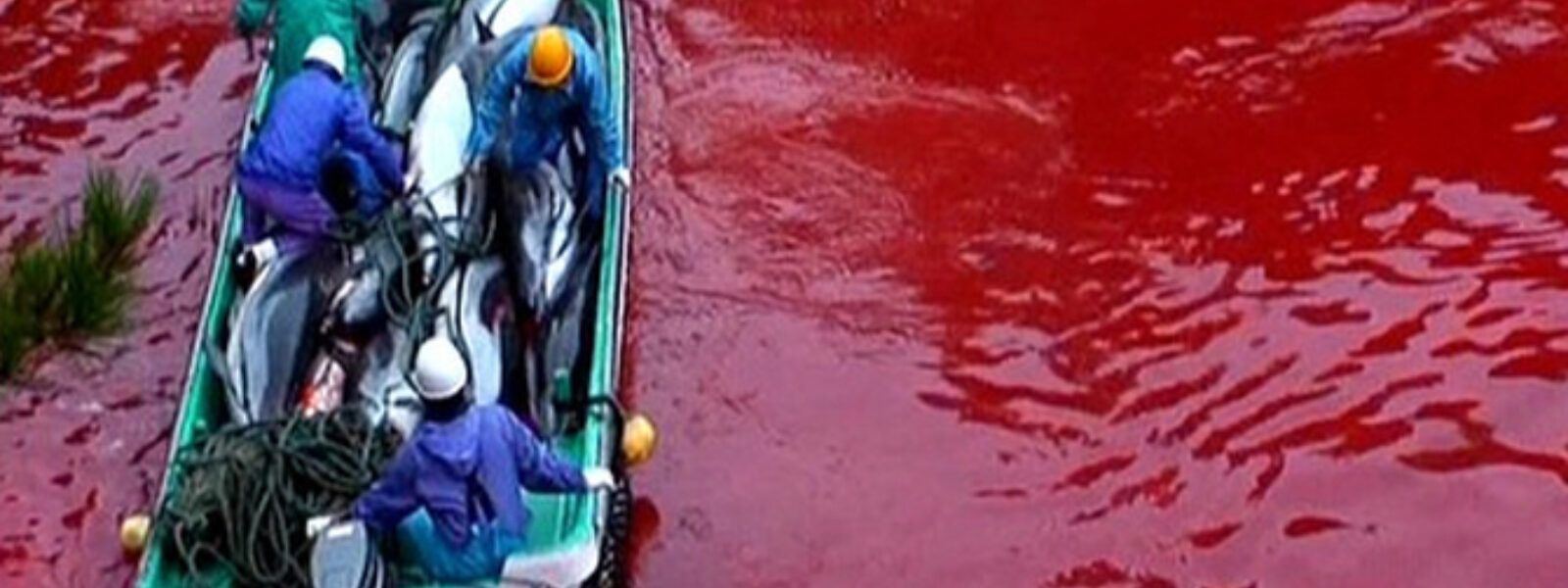

In a blatant move that undermines all sense of scientific integrity, the Japan Fisheries Agency has granted new increased quotas to the Taiji dolphin hunters for two dolphin species whose quotas have been filled.
Last week, the International Marine Mammal Project posted a blog analyzing the first 3 months of the six-months-long season of hunting dolphins in Taiji.
During last summer, the Japan Fisheries Agency issued permits to Taiji to kill and catch for captivity two new species of dolphins – rough-toothed dolphins and melon-headed whales – on top of the quotas for seven other species Taiji already slaughters.
Those new quotas have been already been exceeded with only half the hunt season completed (Sept. 1st to November 30th). According to CetaBase’s reports of dolphins killed and kept for captivity through December 5th, a total of 4 rough-toothed dolphins have been killed and 24 have been captured for a life in a small tanks in aquariums in Japan or overseas in such places as China, Russia, and the Middle East. This is eight more dolphins than the approved annual quota of 20 dolphins from the national Japan Fisheries Agency.
Similarly, 93 melon-headed whales have been killed and 8 have been taken into captivity through December 5th, in excess of one more than Taiji’s annual quota of 100 melon-headed whales for the year.
So did the Japan Fisheries Agency take action to protect these species? Unfortunately not.
On the contrary, the Japan Fisheries Agency just INCREASED the quotas for these two species on December 1st, according to CetaBase, upping the quota for rough-toothed dolphins from 20 to 27 and DOUBLING the quota for melon-headed whales from 100 to 200 animals.
The quotas set by the Japan Fisheries Agency for dolphins have always been controversial. Quotas are not based on any field surveys of the dolphin populations. It is hard to figure out how they are set in the first place, except that they are set at levels which the dolphin hunters rarely exceed.
The Scientific Committee of the International Whaling Commission has consistently criticized the quotas set by the Japan Fisheries Agency as being too high to protect the stocks, particularly of Dall’s porpoises hunted by harpoon in the northern reaches of Japan.
But the Japan government simply ignores the IWC Scientific Committee (as it does the full IWC), claiming that the IWC does not have any jurisdiction over their dolphin populations. It is a response that has no respect for science, only for legal formalities that only exist on paper.
(Experts have pointed out that the IWC may well have jurisdiction over the hunting of all cetaceans, given the migratory habits which often bring these species out of territorial waters into the high seas.)
Taiji’s overall quota for dolphins last season (2016-2017) was for a total of 1,820 dolphins from seven species. But only 595 were caught and slaughtered for meat, and an additional 232 were captured for the captivity trade, so Taiji hunters caught only 827 total - 45% of their dolphin quota - which has been a fairly typical amount in recent years.
It should be noted that the hunters often release some dolphins from pods that have been herded into the Cove in Taiji, especially the bottlenose dolphin, which is far more valuable for captivity than for the meat trade. These released dolphins do not count against the Taiji quotas, despite the fact that these traumatized and broken pods may not survive the process despite being herded back out to sea.
Such high quotas, obviously, do nothing to protect the integrity of the dolphin populations, especially as there is no science or field research behind these quotas in the first place.
The Japan Fisheries Agency is clearly out of control and contributing to the extermination of Japan’s dolphin populations.
Photo by OPS.